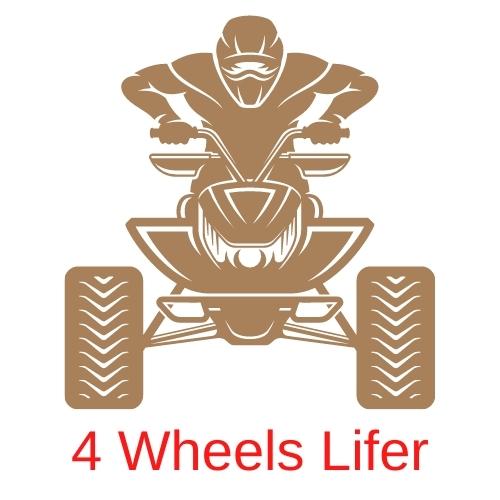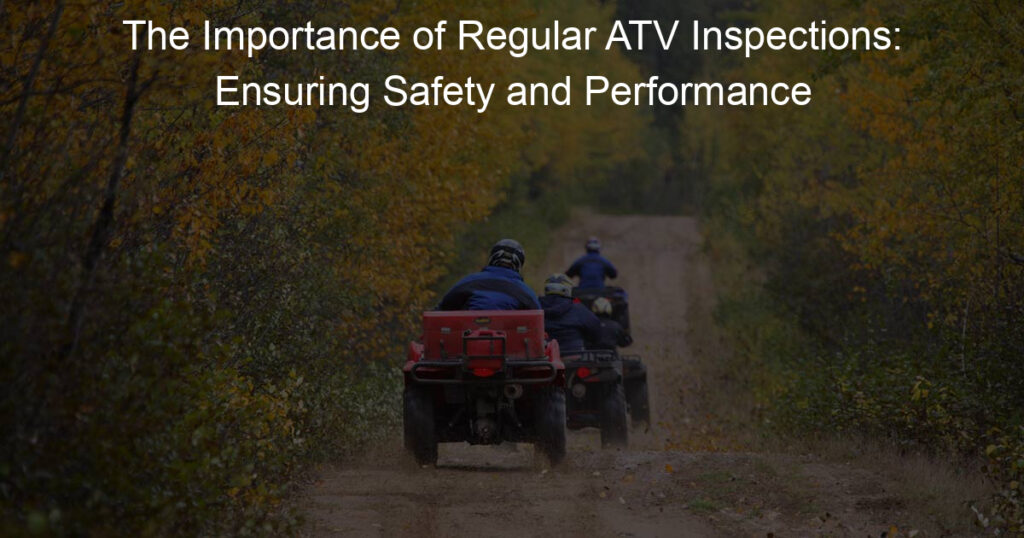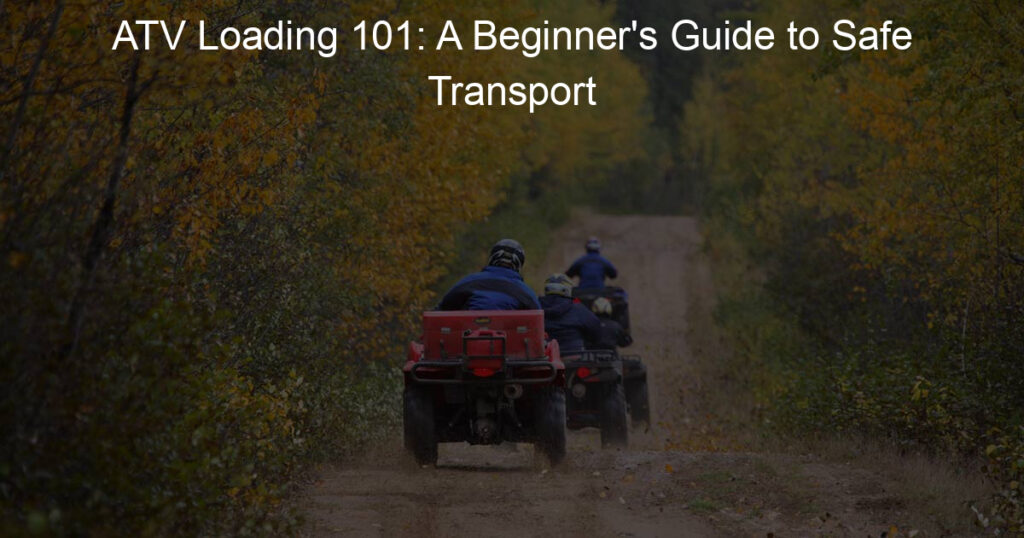As an avid ATV enthusiast, I can’t stress enough the importance of regular inspections for our beloved all-terrain vehicles.
These machines provide us with an unmatched sense of adventure and thrill as we navigate through various landscapes, but with the fun comes responsibility.
The importance of regular ATV inspections will not only prolong their lifespan but also enhance safety for ourselves and those around us.
To truly appreciate the significance of consistent ATV inspections, it’s essential to have a solid understanding of the vehicle and its components. This understanding allows us to recognize potential issues and address them in a timely manner, preventing more significant damage or even accidents.
Regular inspections will also help maintain peak performance, as a well-tuned ATV is not only more fun to ride but also less likely to experience mechanical failure on the trails.
Key Takeaways
- Regular ATV inspections ensure safety and prolong the lifespan of your vehicle
- Knowledge of ATV components is crucial for effective inspection and maintenance
- Addressing potential issues early on can save you costly repairs and improve performance
Understanding ATV and Its Components
When it comes to ATV maintenance, I believe it’s important to understand the different components that make up these versatile vehicles. Knowing what to look for during regular inspections can help ensure that my ATV stays in top condition and performs at its best.
First, let’s talk about the engine. The engine is the heart of any ATV, and it’s important to check for oil leaks, clean the air filter, and make sure the cooling system is functioning properly.
I always keep an eye out for worn or damaged belts, which can lead to reduced performance or even engine failure.
Next up are the wheels and tires. Tires need to be properly inflated, and I check for any signs of damage or excessive wear. The wheels should be aligned, and I make sure to inspect the wheel bearings and lug nuts for any signs of wear or damage.
The steering and controls are crucial for the safe operation of my ATV. I check the handlebar for stability and make sure all the controls and cables are functioning smoothly. It is important to regularly lubricate the moving parts to ensure a comfortable ride.
In terms of electrics, I ensure that the lights are functioning properly, and I inspect the wiring for any signs of wear or damage. This includes checking the battery terminals for corrosion and ensuring the battery is securely fastened.
Now let’s discuss the chain and driveshaft. These components play a vital role in transferring power from the engine to the wheels. I always make sure the chain is well-lubricated, properly adjusted, and free of excessive wear or damage.
If my ATV has a driveshaft, I inspect it for wear and ensure it’s properly aligned.
Lastly, the chassis and exterior of my ATV deserve attention too. I make it a point to inspect the frame for cracks or damage, and I keep an eye on the condition of the bodywork, fenders, and other exterior parts.
These parts protect the internal components and keep my ATV looking great, so it’s essential to keep them in good shape.
Importance of Regular ATV Inspections
As an ATV enthusiast, I cannot stress enough the importance of regular ATV maintenance. It not only ensures the smooth performance of my ATV, but also helps prevent injuries, costly repairs, and the risk of being stranded in the middle of nowhere.
My daily ATV maintenance routine is pretty simple, but it goes a long way. I always start by checking the tires for any wear or damage and proper inflation. This helps maintain a smooth ride and prevents accidents due to tire blowouts.
I also ensure that the brakes are functioning correctly, as poor brakes could lead to injuries or even fatalities.
In addition to daily checks, I perform regular comprehensive inspections, and the following aspects get special attention:
- Engine and Transmission: Keeping the engine and transmission in top shape is crucial for the performance of my ATV. Regular oil changes, air filter checks, and making sure the cooling system is functioning optimally help me stay ahead of potential engine problems.
- Suspension and Steering: The suspension and steering systems play a crucial role in ATV safety, especially when riding on rough terrain. I always inspect the shocks, ball joints, and bushings to avoid any nasty surprises and ensure a comfortable ride.
- Electrical System: A well-maintained electrical system prevents me from getting stranded in the wilderness due to a dead battery or malfunctioning lights. Regularly checking for damaged wires, proper battery charge, and working headlamps and taillights is an essential part of my routine.
Aside from ensuring my own safety and the performance of my ATV, regular maintenance and inspections also help me maintain a good reputation among fellow riders.
No one wants to be known as the one always asking for help or causing unnecessary delays due to equipment failure.
Furthermore, abiding by the local regulations regarding ATV maintenance and inspections keeps me on the right side of the law – which is always a good idea.
In conclusion, regular ATV inspections are vital for a safe and enjoyable riding experience.
Keeping up with daily maintenance tasks and more comprehensive checks helps me avoid costly repairs, prevent injuries, and ensure I stay on the right side of regulations while enjoying my time on the trails.
Pre-Ride Inspection Guide
Before I hop on my ATV and hit the trails, I always make sure I conduct a thorough pre-ride inspection. This not only ensures my safety but also helps in maintaining the longevity of my ATV.
One tool that is incredibly helpful in performing the pre-ride inspection is the T-CLOC checklist. It’s simple, memorable, and comprehensive.
T-CLOC stands for Tires, Controls, Lights, Oil, and Chassis. The checklist covers a thorough examination of all the components that need attention. Let’s dive into the specifics:
Tires – I begin by checking for cuts on the tires. This will help me avoid any sudden flats while riding. I also make sure the axle nuts are tight to ensure the wheels are securely fastened.
Controls – A quick check of the throttle ensures that it operates smoothly without any sticking or restrictions. Proper controls are vital for safe maneuverability on the trails.
Lights – Ensuring the headlights and taillights are working is important, especially when riding in low-light situations or with other riders. This helps me see the trail clearly and allows others to spot me easily.
Oil – I check the oil levels and look for any leaks. It’s essential not only for the performance of the ATV but also to keep the engine healthy over time.
Chassis – Finally, I inspect the overall chassis. I keep an eye out for any loose bolts, broken parts, or damaged components that could impact my safety or the performance of the ATV.
Taking a few minutes to conduct a T-CLOC pre-ride inspection on my ATV has become an invaluable routine. It not only ensures I have an enjoyable and safe ride but also helps me keep my ATV in top condition.
So, I highly recommend all ATV enthusiasts incorporate this essential pre-ride inspection guide into their adventures.
Essential Components to Inspect
As an ATV enthusiast, I know how crucial regular inspections are to ensure your ATV remains in good working condition.
The following essential components need careful examination.
Tires: I always start by checking the tire pressure and assessing the tires for any cuts, punctures, or uneven wear. Proper tire pressure ensures a smooth ride and prevents premature wear.
Fluids: Fluids play a vital role in the smooth operations of an ATV. I inspect the oil level, brake fluid, and coolant levels regularly. I also check for any leaks that may indicate fluid loss and consider replacing fluids if needed.
Engine Oil and Oil Filters: Changing the engine oil and oil filter periodically maintains the engine’s efficiency. I make sure to verify the oil level and color, replacing them if they appear dirty or low.
Air Filters: A clean air filter promotes better airflow and fuel efficiency. I inspect my ATV’s air filter and replace it if dirty or clogged.
Battery: To avoid unexpected breakdowns, I check the battery terminals for corrosion and ensure they are securely connected. I also make sure the battery is fully charged before heading out on the trails.
Suspension Components: Proper suspension keeps the ATV stable and smooth over rough terrain. I inspect the suspension components, including bushings, bearings, and shocks, for any signs of wear or damage.
Brakes: Stopping safely is essential. I examine the brake pads, rotors, and fluid levels, replacing or adjusting them as necessary to maintain optimal braking performance.
Spark Plug: I confirm my ATV’s spark plug is in good condition, ensuring it is clean and free from any build-up, and replace it if necessary.
Nuts and Bolts: I go over all the nuts and bolts on my ATV, confirming they are secure. Loose or missing bolts can lead to avoidable accidents.
Exhaust System: I always inspect my ATV’s exhaust system for any cracks, dents, or rust. Regular cleaning and maintenance keep the exhaust in good working condition and reduce the risks of issues down the road.
Certification: Lastly, I make sure my ATV’s certification is up to date, following the necessary guidelines and regulations for safe operation.
Carrying out these regular inspections, I know I’m helping my ATV perform its best and ensuring a safe, enjoyable ride for myself and others on the trails.
Maintenance and Replacement Guide
I find regular maintenance to be essential for the smooth functioning and longevity of my ATV. It helps to prevent costly repairs and replacement of parts by nipping potential issues in the bud.
For regular maintenance, I always start by checking my oil levels. I change the oil every few rides to keep the engine running smoothly and efficiently.
When it comes to preventative maintenance, I make sure to keep an eye on the following parts of my ATV:
- Tires: I examine tire pressure and tread at least once a month.
- Brakes: I check my brake pads and fluid levels frequently.
- Air filter: I clean or replace the air filter as needed based on the manufacturer’s guidelines.
Apart from these maintenance tasks, I also perform inspections on other components of my ATV. I pay special attention to the bearings, suspension, exhaust, and fuel systems to identify any potential problems.
In case I notice any worn-out or damaged parts on my ATV, I prioritize replacing them promptly. Doing so reduces the chances of breakdowns or accidents on trails. Maintaining a clean and well-lubricated chain is also a crucial aspect of prolonging the life of my ATV.
Overall, staying on top of regular maintenance and promptly addressing any repairs not only enhances the performance of my ATV but also ensures a safe and enjoyable riding experience.
Cost and Longevity
As an ATV enthusiast, I can attest to the importance of regular inspections when it comes to cost and longevity. In this section, I will focus on how performing frequent checks can save us money in the long run and extend the life of our ATVs.
Firstly, let’s talk about costly repairs. When we neglect our ATV inspections, it can lead to components wearing out or breaking unexpectedly. This can result in expensive fixes or even the need for replacement parts.
By consistently checking for any damage or wear, we can catch and address these issues early before they spiral into bigger problems. This proactive approach not only saves us money on repairs but also helps to maintain the overall performance of our vehicle.
When it comes to longevity, regular inspections play a critical role. Just like any other mechanical equipment, our ATVs are prone to deterioration over time. With proper care and timely maintenance, we can extend the useful life of our vehicles.
For instance, ensuring that key components such as the engine, brake system, and suspension are in good working condition will help us avoid costly breakdowns and accidents.
Moreover, it can contribute to a safer and more enjoyable riding experience.
Clean and well-maintained ATVs tend to hold their value better than those that have been neglected. This means that when we decide to upgrade or sell our vehicles, we can expect to get a fair price for them. In the long run, this will save us money and allow us to invest in even better equipment.
To sum things up, I believe that consistent ATV inspections are a wise investment that can help us save money while also ensuring that our vehicles have a longer lifespan.
So let’s commit to keeping our ATVs in top shape and enjoy the many benefits that result from regular maintenance.
Frequently Asked Questions
What are the key components to check during an ATV inspection?
When I inspect my ATV, I make sure to thoroughly examine several crucial components. I usually start with the tires – checking their pressure and looking for any signs of wear or damage. Then, I inspect the brakes, ensuring they’re functioning properly and have sufficient pad thickness.
I also look at the chain or drive belt, making sure it’s properly adjusted and lubricated. The oil and coolant levels are important too, so I verify that they are within the recommended range.
Finally, I perform a visual inspection of the suspension and steering system, ensuring they’re in good working order.
How can regular inspections improve ATV performance and lifespan?
By conducting regular inspections, I can catch and address potential issues before they become significant problems. This helps me to maintain my ATV’s optimal performance and ensure that it has a long, healthy life.
When I take the time to check the important components, such as brakes, tires, and fluids, I can prevent potential damage or accidents that could cause more wear and tear on my ATV.
What are the common issues found during ATV inspections?
During an ATV inspection, I often come across a few common issues. These include low tire pressure, worn or damaged tires, improperly adjusted or worn out chains or drive belts, low or contaminated oil or coolant, and issues with the suspension or steering systems.
Regularly addressing these concerns helps me to maintain my ATV’s safety and performance.
Why is it vital to schedule routine ATV maintenance?
Scheduling routine ATV maintenance is essential because it helps me to identify and fix potential problems early on. It ensures that my ATV remains in its best possible condition, which ultimately leads to a safer and more enjoyable riding experience.
Furthermore, it helps me prolong the lifespan of my ATV by preventing certain types of wear and damage that can result from neglecting maintenance.
How can proper ATV inspections prevent accidents?
By performing proper ATV inspections, I can prevent accidents by identifying and addressing any potential safety concerns.
Ensuring that key components like brakes, tires, and suspension are in good working order allows me to ride my ATV with confidence, knowing that I can safely navigate various terrains and riding conditions.
What is the recommended frequency for ATV inspections?
The recommended frequency for ATV inspections depends on how often and under what conditions I ride. Generally, it’s a good idea to perform a quick visual inspection before each ride.
Regardless, more thorough inspections should take place at least every six months or according to the manufacturer’s guidelines. It’s essential to consult my ATV’s owner’s manual for specific recommendations, as every model is different.














